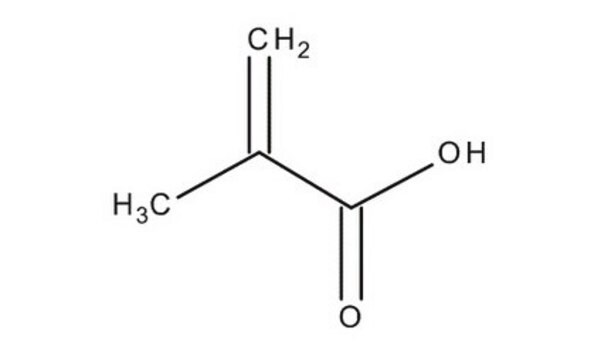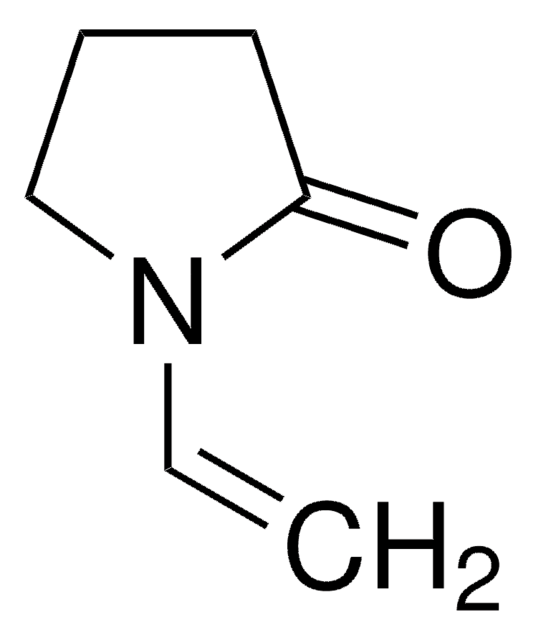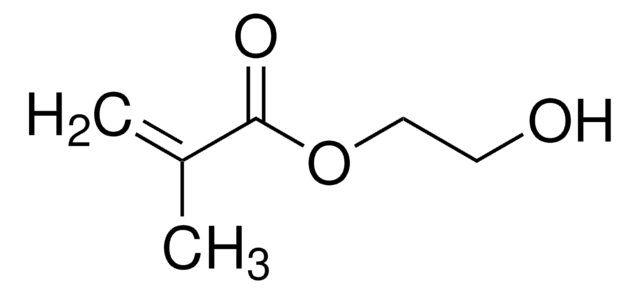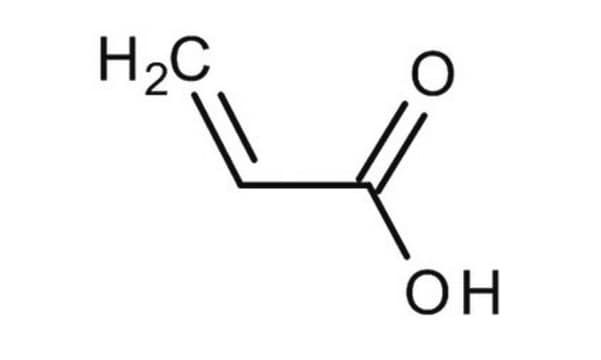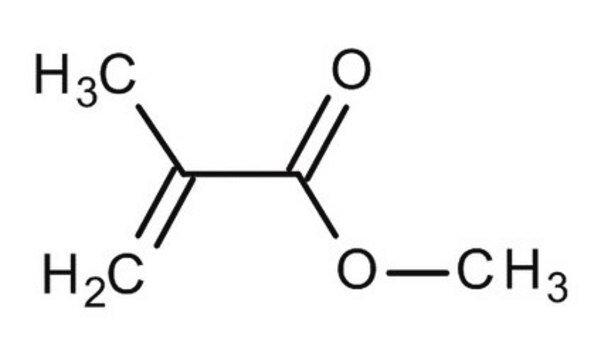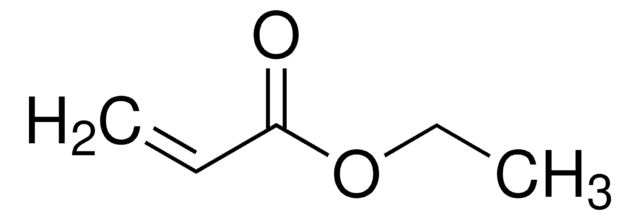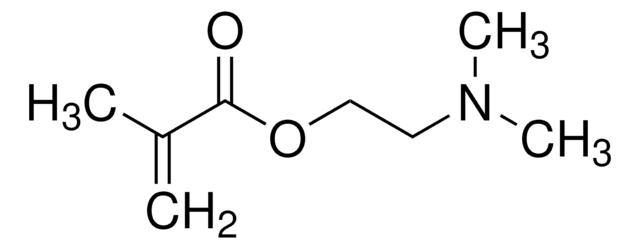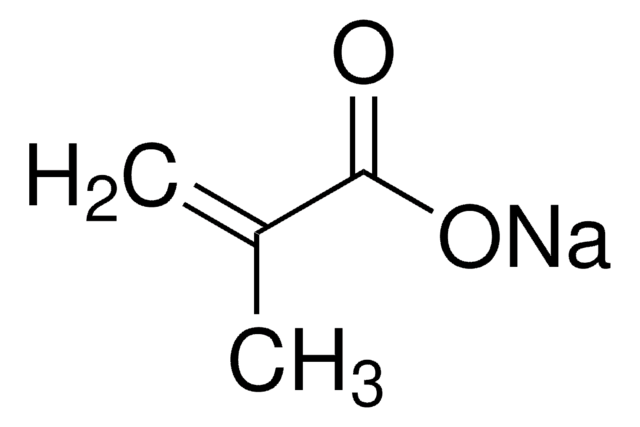155721
Methacrylic acid
contains 250 ppm MEHQ as inhibitor, 99%
Sinônimo(s):
2-Methacrylic acid, 2-Methylpropenoic acid
About This Item
Produtos recomendados
densidade de vapor
>3 (vs air)
Nível de qualidade
pressão de vapor
1 mmHg ( 20 °C)
Ensaio
99%
Formulário
liquid
temperatura de autoignição
752 °F
contém
250 ppm MEHQ as inhibitor
índice de refração
n20/D 1.431 (lit.)
pH
2.0-2.2 (20 °C, 100 g/L)
p.e.
163 °C (lit.)
pf
12-16 °C (lit.)
densidade
1.015 g/mL at 25 °C (lit.)
cadeia de caracteres SMILES
C=C(C)C(O)=O
InChI
1S/C4H6O2/c1-3(2)4(5)6/h1H2,2H3,(H,5,6)
chave InChI
CERQOIWHTDAKMF-UHFFFAOYSA-N
Procurando produtos similares? Visita Guia de comparação de produtos
Descrição geral
Aplicação
Palavra indicadora
Danger
Frases de perigo
Declarações de precaução
Classificações de perigo
Acute Tox. 3 Dermal - Acute Tox. 4 Inhalation - Acute Tox. 4 Oral - Eye Dam. 1 - Skin Corr. 1A - STOT SE 3
Órgãos-alvo
Respiratory system
Código de classe de armazenamento
6.1C - Combustible acute toxic Cat.3 / toxic compounds or compounds which causing chronic effects
Classe de risco de água (WGK)
WGK 1
Ponto de fulgor (°F)
152.6 °F - closed cup
Ponto de fulgor (°C)
67 °C - closed cup
Equipamento de proteção individual
Faceshields, Gloves, Goggles, type ABEK (EN14387) respirator filter
Escolha uma das versões mais recentes:
Já possui este produto?
Encontre a documentação dos produtos que você adquiriu recentemente na biblioteca de documentos.
Os clientes também visualizaram
(RAFT) Polymerization
Composites
Artigos
The manufacture of monomers for use in ophthalmic applications is driven by the need for higher purity, improved reliability of manufacturing supply, but ultimately by the need for the increased comfort, convenience, and safety of contact lens wearers. Daily wear contact lenses have the potential to fill this need for many customers; however, their widespread use is constrained by higher costs compared to weekly- or monthly-based lenses. New approaches that improve cost structure and result in higher quality raw materials are needed to help make contact lenses more affordable and accelerate growth of the contact lens market.
By altering the physicochemical properties, smart or intelligent drug delivery systems can be designed to deliver therapeutic molecules on-demand. Learn more about the application of stimuli-responsive materials in drug delivery.
Nossa equipe de cientistas tem experiência em todas as áreas de pesquisa, incluindo Life Sciences, ciência de materiais, síntese química, cromatografia, química analítica e muitas outras.
Entre em contato com a assistência técnica